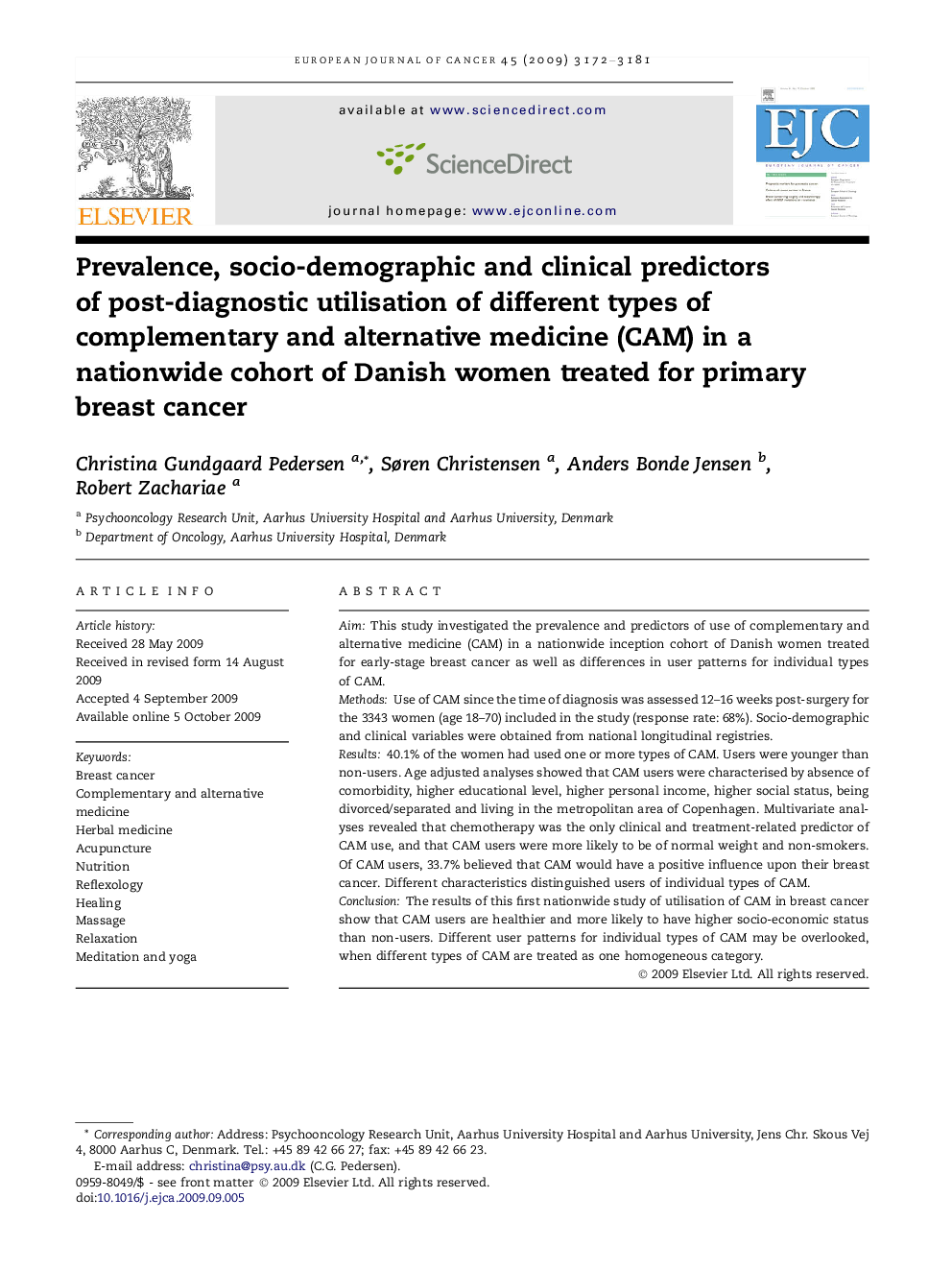| کد مقاله | کد نشریه | سال انتشار | مقاله انگلیسی | نسخه تمام متن |
|---|---|---|---|---|
| 2123429 | 1547220 | 2009 | 10 صفحه PDF | دانلود رایگان |

AimThis study investigated the prevalence and predictors of use of complementary and alternative medicine (CAM) in a nationwide inception cohort of Danish women treated for early-stage breast cancer as well as differences in user patterns for individual types of CAM.MethodsUse of CAM since the time of diagnosis was assessed 12–16 weeks post-surgery for the 3343 women (age 18–70) included in the study (response rate: 68%). Socio-demographic and clinical variables were obtained from national longitudinal registries.Results40.1% of the women had used one or more types of CAM. Users were younger than non-users. Age adjusted analyses showed that CAM users were characterised by absence of comorbidity, higher educational level, higher personal income, higher social status, being divorced/separated and living in the metropolitan area of Copenhagen. Multivariate analyses revealed that chemotherapy was the only clinical and treatment-related predictor of CAM use, and that CAM users were more likely to be of normal weight and non-smokers. Of CAM users, 33.7% believed that CAM would have a positive influence upon their breast cancer. Different characteristics distinguished users of individual types of CAM.ConclusionThe results of this first nationwide study of utilisation of CAM in breast cancer show that CAM users are healthier and more likely to have higher socio-economic status than non-users. Different user patterns for individual types of CAM may be overlooked, when different types of CAM are treated as one homogeneous category.
Journal: European Journal of Cancer - Volume 45, Issue 18, December 2009, Pages 3172–3181